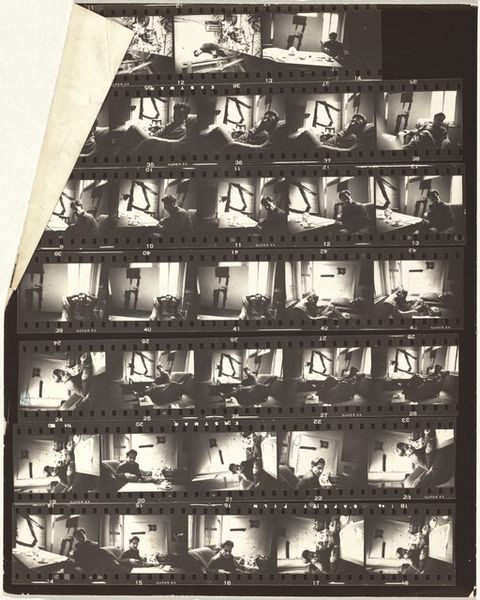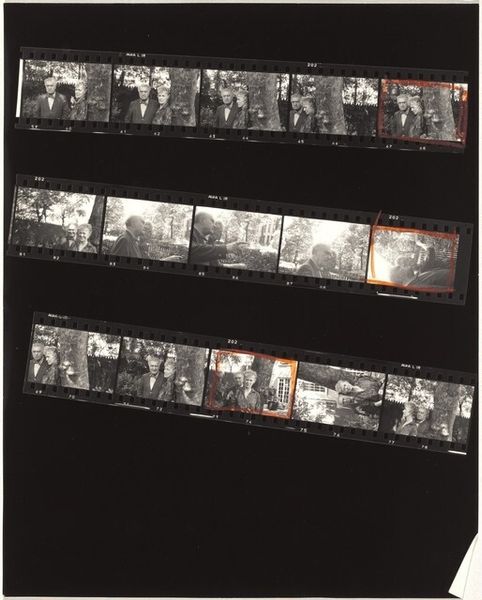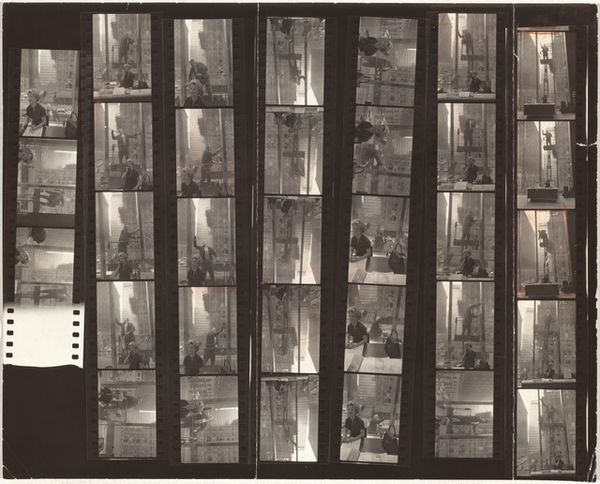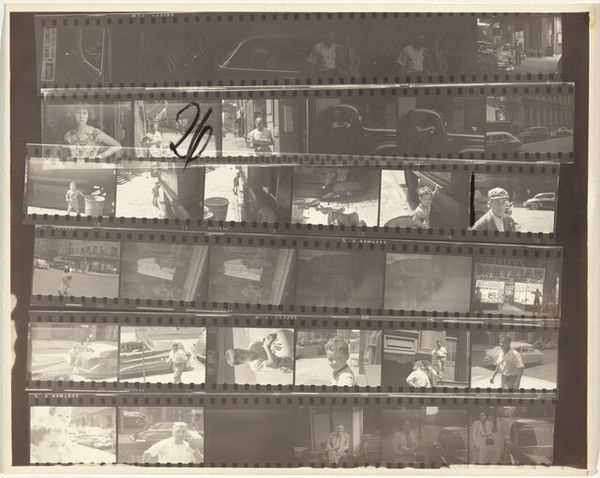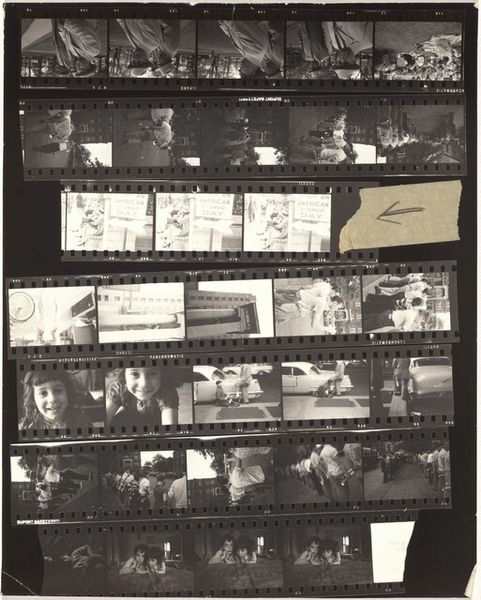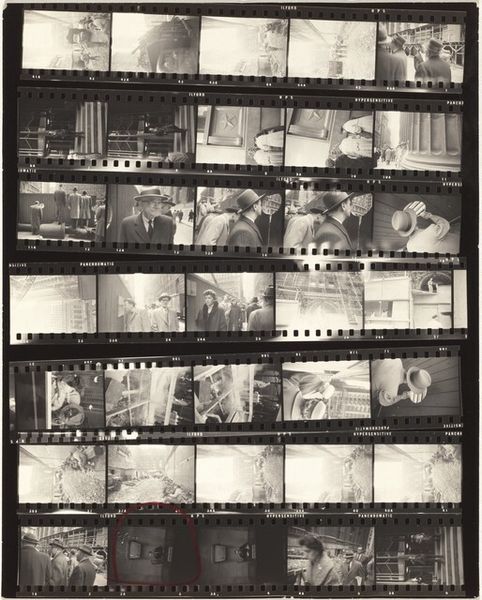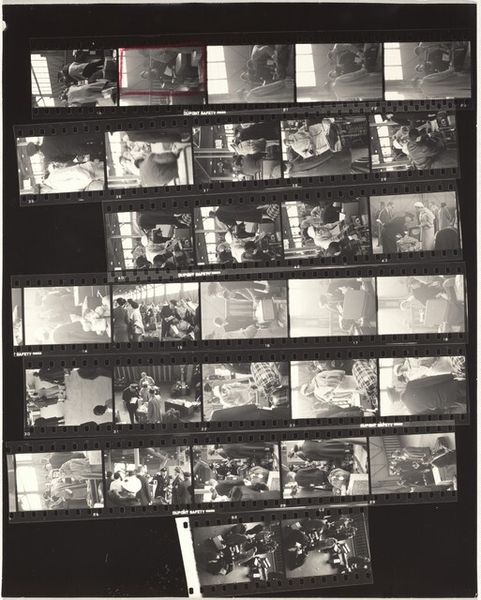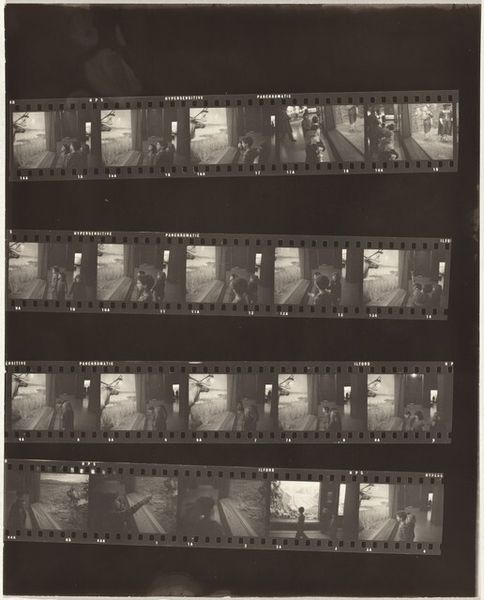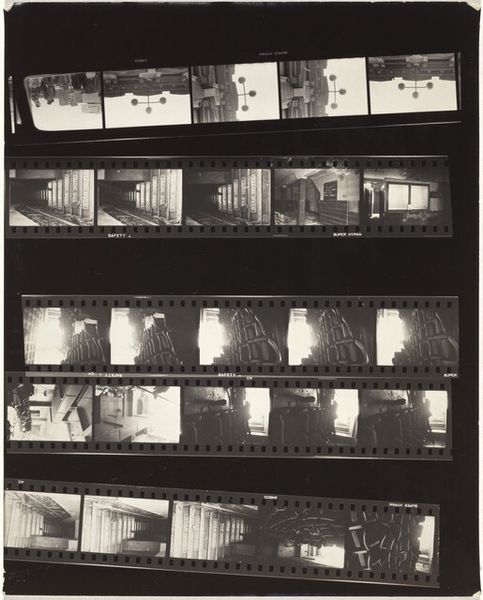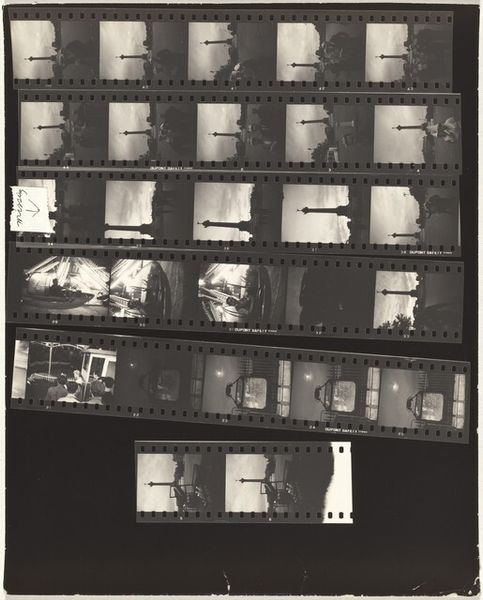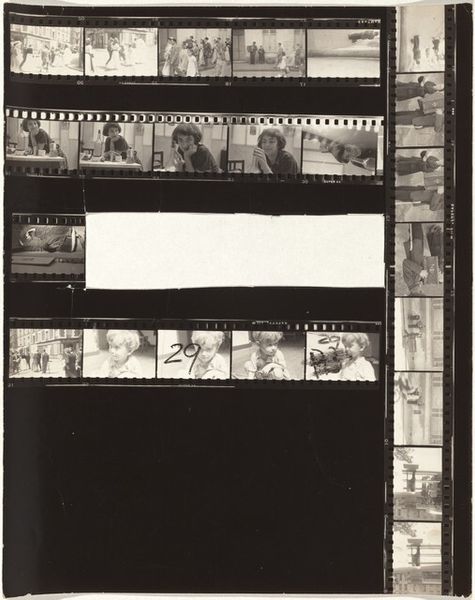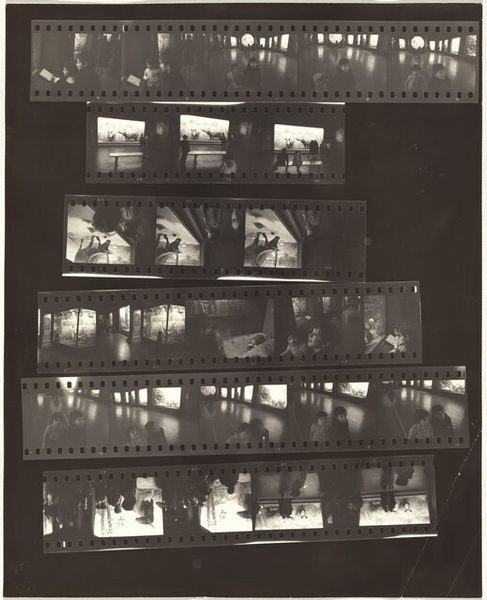
Dimensions: overall: 25.3 x 20.2 cm (9 15/16 x 7 15/16 in.)
Copyright: National Gallery of Art: CC0 1.0
Curator: Here we have Robert Frank’s “Painters no number”, a contact print made circa 1950s. Editor: The repetition of images along the film strip gives it a rhythmic quality. I can sense an aura of mid-century bohemian life; a very cool kind of restlessness comes to mind. Curator: Let’s consider the composition. Frank’s use of the entire film strip—complete with frame edges and visible numbers—disrupts traditional photographic presentation. It acknowledges the raw, material process of image-making. The arrangement emphasizes the inherent sequentiality of photography and cinematic form. Editor: Precisely! Each row presents a potential narrative, but instead, we get a grid, frustrating conventional expectations for photographic truth. The artists—mostly women, I think—appear isolated within their creative labor. Think about gendered labor at mid-century. Frank captured a period where women were navigating constraints both within the art world and society. This print really opens to think about work and subjectivity. Curator: The grainy, high-contrast aesthetic also flattens the picture, reducing tonal subtlety in favor of graphic impact. These stylistic decisions create a very particular feeling. There is an appealing ambiguity arising from these portraits’ sequential, yet disconnected format, drawing our eye into its textural features. Editor: It's fascinating how this format anticipates so much that is at play within contemporary photography! This "unorthodox" presentation highlights how photographic representation mediates between individual experience and collective identity, particularly for artists outside the mainstream. What do you take away from Frank's experimental take on portraiture? Curator: A compelling visual testament to the processes behind making art. Frank exposes the usually unseen aspects. Editor: I agree; it's the intimacy of creative labor—reproduced across many frames, that intrigues me the most. A candid series of revealing moments that hint to the gender dynamics in mid-century artistic professions.
Comments
No comments
Be the first to comment and join the conversation on the ultimate creative platform.
